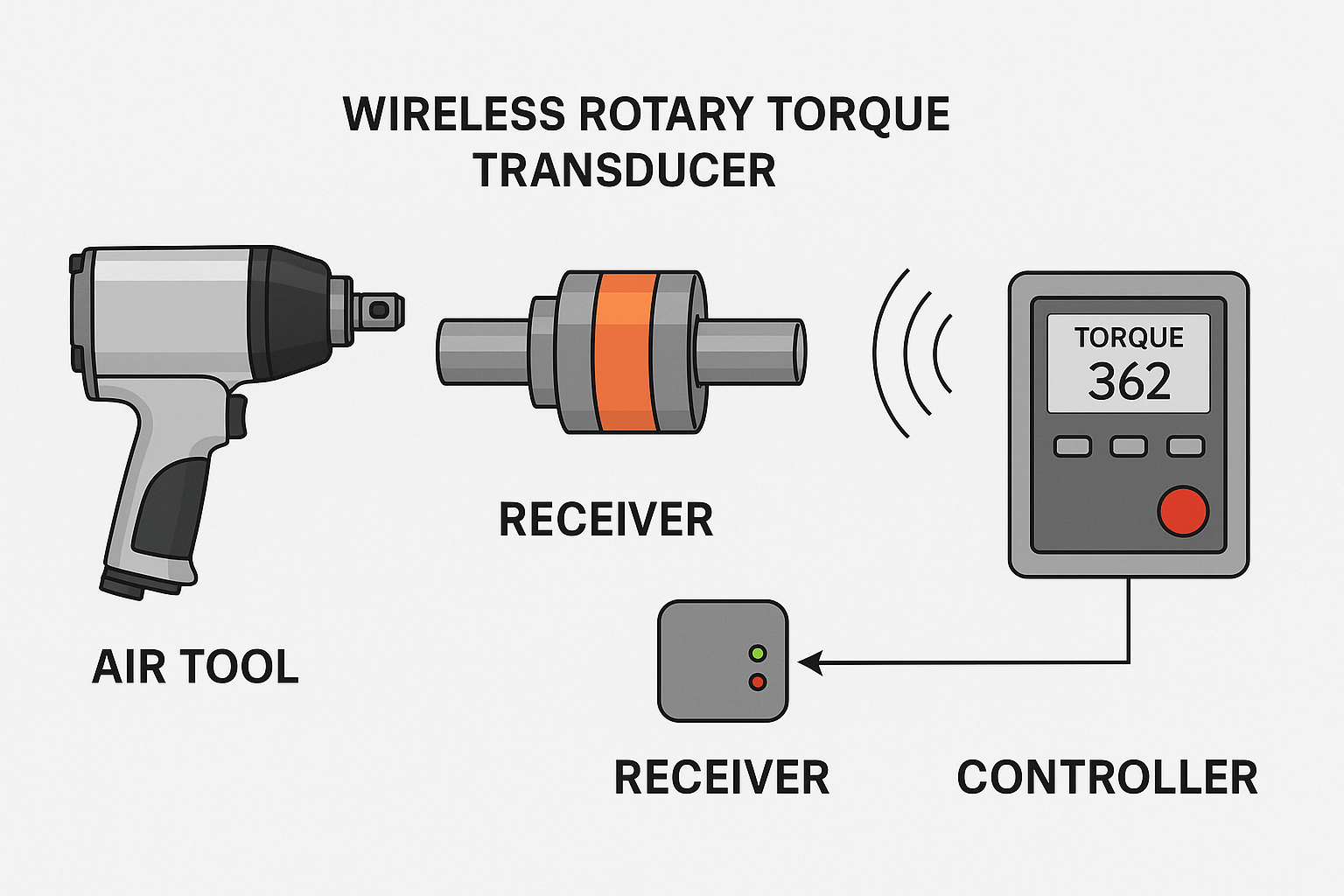Wireless Rotary Torque Transducer
(Also known as Wireless Rotary Torque Sensor / Non-Contact Torque Transmitter)
A Wireless Rotary Torque Transducer is a precision sensor device that measures the rotational torque applied to a rotating shaft and transmits the data wirelessly — without the need for slip rings or physical wiring.
It is a key component in real-time torque monitoring, calibration, and process control for rotating machinery, power tools, and industrial bolting systems.
Unlike conventional wired transducers, the wireless rotary type uses contactless signal transmission via RF (radio frequency), Bluetooth, ensuring stable, high-speed, and interference-resistant torque data even under high-speed rotation and vibration.
Working Principle
Strain Measurement:
A strain gauge bridge is bonded to the rotating shaft or torque-sensing element.
As torque is applied, the shaft twists slightly, changing the electrical resistance of the strain gauges.Signal Conditioning:
The signal is amplified and converted into a digital torque signal by onboard electronics mounted on the rotating element.Wireless Data Transmission:
The conditioned torque signal is transmitted wirelessly to a stationary receiver (via RF link), eliminating the need for slip rings or wires.Data Output:
The receiver outputs standard analog or digital signals to external data systems, controllers, or MES networks.
Key Features
Fully Wireless Operation:
Contactless power and data transmission — no wear-prone slip rings or brushes.High Accuracy:
Typical measurement accuracy of ±1% of full scale.High-Speed Capability:
Supports rotational speeds up to 10,000 rpm or higher.Anti-Vibration Design:
This design is resistant to shock and vibration, making it ideal for impact and pulse-type pneumatic tools.Compact & Lightweight:
Easy integration into tool spindles, torque testers, or test benches.Data Logging & Communication:
Real-time torque, angle, and temperature data can be logged or sent to controllers via Wi-Fi, RF, or Bluetooth.
Applications
Smart Torque-Control Systems (e.g., ZIPPTORK TCA/TCB/TCC controllers)
Pneumatic and Electric Power Tools (impact, pulse, clutch-type)
Dynamometers and Test Benches
Automotive and Aerospace Assembly
Rotating Machinery Torque Monitoring
Calibration of Torque Tools and Bolting Systems
Advantages
Enables real-time torque verification in fast-rotating systems.
This technology converts conventional pneumatic tools into smart, data-driven devices.
Improves process traceability, quality control, and predictive maintenance.
Ideal for IIoT / Industry 4.0 integration, bridging OT → IT → MES systems.

